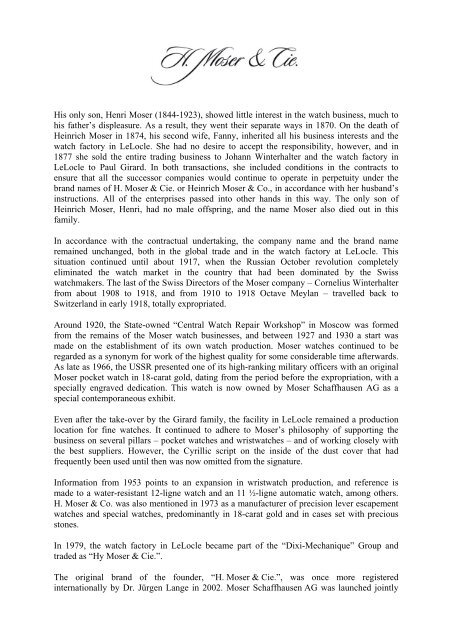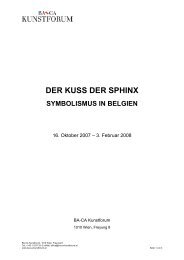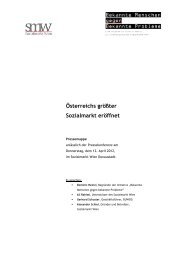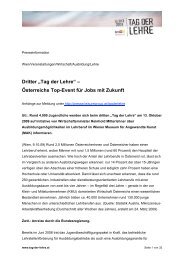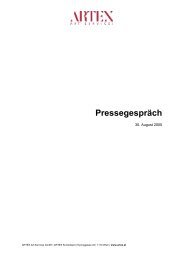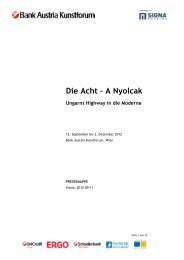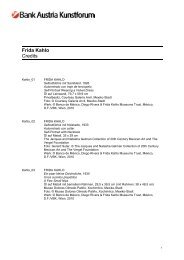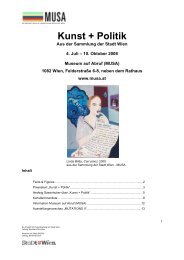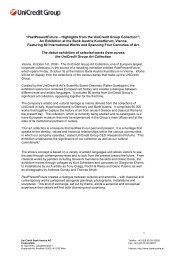Johann Heinrich Moser
Johann Heinrich Moser
Johann Heinrich Moser
You also want an ePaper? Increase the reach of your titles
YUMPU automatically turns print PDFs into web optimized ePapers that Google loves.
His only son, Henri <strong>Moser</strong> (1844-1923), showed little interest in the watch business, much to<br />
his father’s displeasure. As a result, they went their separate ways in 1870. On the death of<br />
<strong>Heinrich</strong> <strong>Moser</strong> in 1874, his second wife, Fanny, inherited all his business interests and the<br />
watch factory in LeLocle. She had no desire to accept the responsibility, however, and in<br />
1877 she sold the entire trading business to <strong>Johann</strong> Winterhalter and the watch factory in<br />
LeLocle to Paul Girard. In both transactions, she included conditions in the contracts to<br />
ensure that all the successor companies would continue to operate in perpetuity under the<br />
brand names of H. <strong>Moser</strong> & Cie. or <strong>Heinrich</strong> <strong>Moser</strong> & Co., in accordance with her husband’s<br />
instructions. All of the enterprises passed into other hands in this way. The only son of<br />
<strong>Heinrich</strong> <strong>Moser</strong>, Henri, had no male offspring, and the name <strong>Moser</strong> also died out in this<br />
family.<br />
In accordance with the contractual undertaking, the company name and the brand name<br />
remained unchanged, both in the global trade and in the watch factory at LeLocle. This<br />
situation continued until about 1917, when the Russian October revolution completely<br />
eliminated the watch market in the country that had been dominated by the Swiss<br />
watchmakers. The last of the Swiss Directors of the <strong>Moser</strong> company – Cornelius Winterhalter<br />
from about 1908 to 1918, and from 1910 to 1918 Octave Meylan – travelled back to<br />
Switzerland in early 1918, totally expropriated.<br />
Around 1920, the State-owned “Central Watch Repair Workshop” in Moscow was formed<br />
from the remains of the <strong>Moser</strong> watch businesses, and between 1927 and 1930 a start was<br />
made on the establishment of its own watch production. <strong>Moser</strong> watches continued to be<br />
regarded as a synonym for work of the highest quality for some considerable time afterwards.<br />
As late as 1966, the USSR presented one of its high-ranking military officers with an original<br />
<strong>Moser</strong> pocket watch in 18-carat gold, dating from the period before the expropriation, with a<br />
specially engraved dedication. This watch is now owned by <strong>Moser</strong> Schaffhausen AG as a<br />
special contemporaneous exhibit.<br />
Even after the take-over by the Girard family, the facility in LeLocle remained a production<br />
location for fine watches. It continued to adhere to <strong>Moser</strong>’s philosophy of supporting the<br />
business on several pillars – pocket watches and wristwatches – and of working closely with<br />
the best suppliers. However, the Cyrillic script on the inside of the dust cover that had<br />
frequently been used until then was now omitted from the signature.<br />
Information from 1953 points to an expansion in wristwatch production, and reference is<br />
made to a water-resistant 12-ligne watch and an 11 ½-ligne automatic watch, among others.<br />
H. <strong>Moser</strong> & Co. was also mentioned in 1973 as a manufacturer of precision lever escapement<br />
watches and special watches, predominantly in 18-carat gold and in cases set with precious<br />
stones.<br />
In 1979, the watch factory in LeLocle became part of the “Dixi-Mechanique” Group and<br />
traded as “Hy <strong>Moser</strong> & Cie.”.<br />
The original brand of the founder, “H. <strong>Moser</strong> & Cie.”, was once more registered<br />
internationally by Dr. Jürgen Lange in 2002. <strong>Moser</strong> Schaffhausen AG was launched jointly


